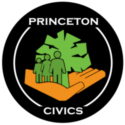This school year has held unprecedented difficulties and challenges for students and teachers alike. Students in particular have adjusted to numerous schedule changes while continuing to perform up to expectations. As students have maintained good grades and strong work ethics, it is imperative that they continue to bring positive change within the school by advocating for themselves and revealing difficulties to address. Throughout the year, I participated in a dialogue with the school district to address issues in my math class, giving me unique insight on how students and families can make change at PHS.
To bring about progress, the first step must always be identifying concerns to solve. In our math class, we faced many obstacles: lack of in-class preparation, difficult and unexplained test problems, few chances to communicate with teachers, and inconsistent grading policies. As students, we all frequently felt the burden of these problems. We then brainstormed possible solutions to our issues to bring to our meeting. One key to successfully advocating for change is bringing reasonable, effective suggestions to the table. This shows a deeper understanding of the issues at hand and opens the conversation for potential solutions.
Next, a connection must be established between district administration and the student body. No matter how big or how small the problem is, open communication is crucial to solving it. In our case, we first started by emailing our teachers and the school district about issues we faced on our own. At first, the district was unresponsive to our emails and petitions. However, through persistent attempts, we were able to schedule a meeting to talk about our frustrations and how to move forward. Persistence is necessary to make change in any environment; until you are willing to go the extra mile to present your point, no one will go the extra mile to help you.
Another powerful tool in advocacy is the power of numbers. At first, many math students felt afraid to voice their opinions and thoughts, but those who did reach out to their teachers were unsuccessful in achieving permanent change because they failed to come together as a group. Some even tried going higher to school and district administration with the support of their parents, but were only partially successful. Only after parents and students alike reached out as a collective whole were their efforts successful. Many of the problems we faced were common ones, and to achieve change it took a collective effort. Going through these steps, we finally secured a meeting with the school administration. Presenting our points clearly and fluently, we explained what exactly was the issue, and brought our own ideas on how to solve them.
Throughout the process, we stayed intent on our goal: helping fix the math experience for future classes of students and making the class more enjoyable and educational. With persistence, focus, and determination, we helped to reform our class. In the weeks following our meeting, I began to notice many of the suggestions being implemented. Fewer test questions, transparent grading, and slower class pace were all changes I observed. From this experience, I learned that students can inspire progress in PHS through perseverance and determination. As the school year draws to a close and students prepare for break and then next year, it is important that we continue to remember our responsibility to learn, and to seek and advocate for change where change is needed.
